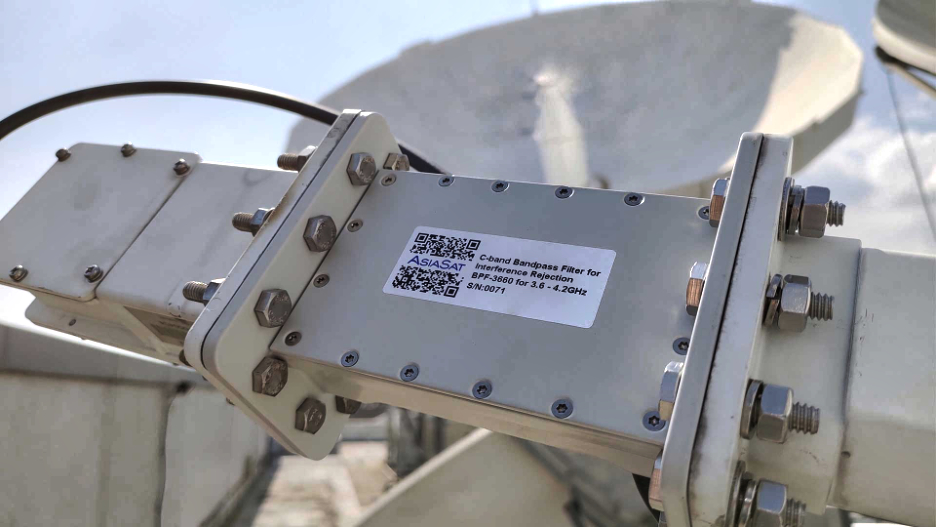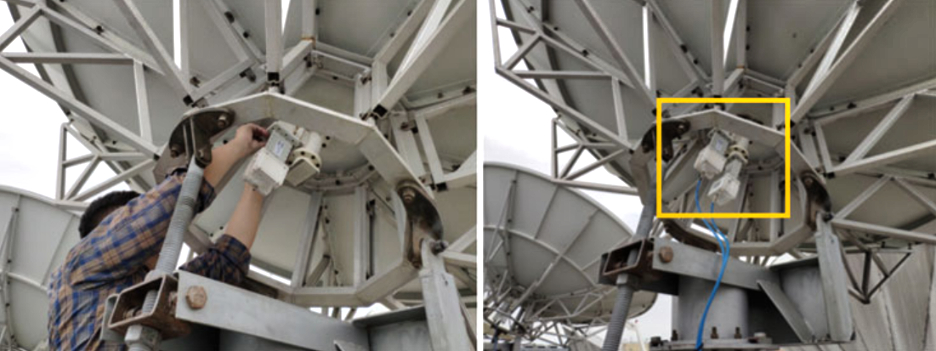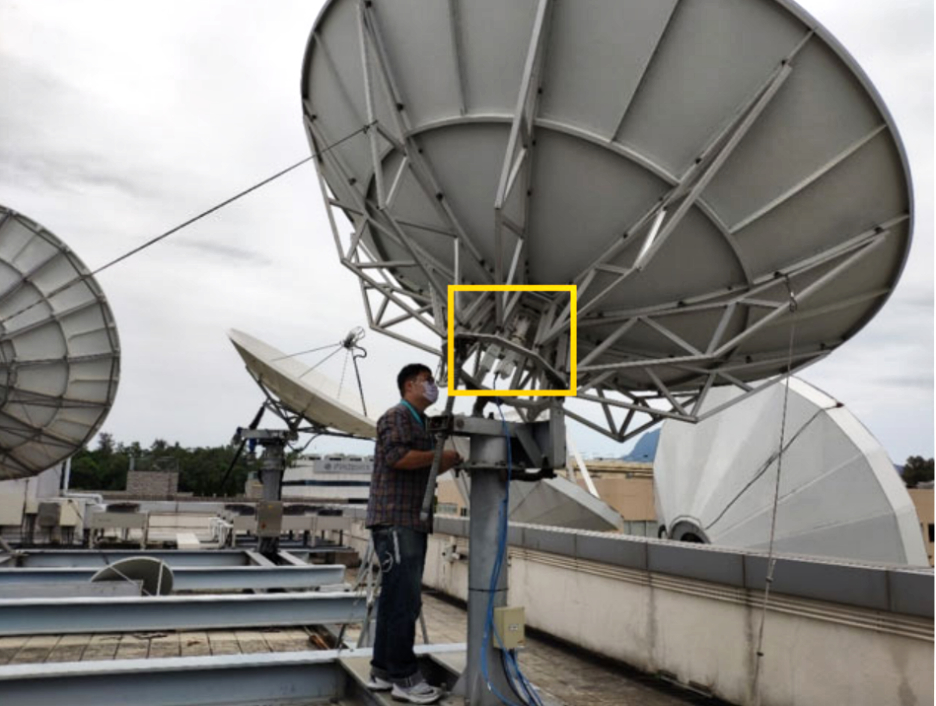
AsiaSat bandpass filter (BPF).
In light of the roll-out of 5G in Hong Kong, AsiaSat has accelerated efforts to provide the necessary protection for its C-band TT&C (Telemetry, Tracking and Control) and TVRO antennas against potential interference from 5G deployment, to ensure the continuity of satellite operation and uninterrupted service to customers.
There are currently a total of 30 C-band antennas installed at AsiaSat’s Tai Po Earth Station in Hong Kong, with 10 C-band antennas of size ranging from 4.5 to 11.3 meters to support the TT&C activities of AsiaSat’s satellite fleet, and the remaining TVRO antennas for monitoring TV programs delivered on AsiaSat as well as for teleport service to customers.

AsiaSat's Tai Po Earth Station at Tai Po Industrial Estate,
New Territories, Hong Kong.
As the lower C-band spectrum originally used for satellite service, i.e., the 3.5 GHz band for Hong Kong market, has been reassigned for 5G, it is important that satellite operators, broadcast stations, VSAT networks, hotels and numerous commercial and residential buildings receiving satellite TV via SMATV systems or TVROs take steps to protect their existing satellite services to minimize the chance for satellite reception from the entire 3.4 to 4.2 GHz band to be affected.
In Hong Kong alone, there are more than 1,400 C-band SMATV systems and 859,000 outlets, and additionally several C-band teleports and VSAT terminal hubs operating throughout the territory.
Over the past few months, AsiaSat has started installing bandpass filters (BPFs) on its C-band receiving antennas to prepare for the arrival of 5G service in Hong Kong. These bandpass filters, jointly developed by AsiaSat with local microwave experts, have been extensively tested and deployed at reception sites across Greater China and in other Asia-Pacific markets. Results from field tests and customer site installations have been positive and demonstrate that AsiaSat BPF’s insertion loss provide minimal link performance degradation while providing the required suppression of 5G signals. These new filters have proven to be effective in suppressing interfering signals from nearby 5G base stations, thus preserving the quality of satellite reception.

(Left) Installing AsiaSat BPF on the antenna feed of one of
AsiaSat’s 3.7 meter TVRO antenna in Tai Po.
Among AsiaSat’s bandpass filters, the BPF-3700S model was the first in the series launched and designed for the 5G spectrum requirements for Hong Kong SAR and China markets. Other models include BPF-3800R and BPF-3800S for South Korea and Australia, BPF-3900S for the Middle East, with models BPF-3664, 3600, 3700T and 3900S lately introduced for other Asia-Pacific markets, providing optimised rejection and passband to reject 5G spectrum up to 3.6, 3.7 and 3.8 GHz.
C-band is critical for satellite services that require high availability and wide area coverage, particularly indispensable for establishing communication links in sparsely populated and geographically remote areas, as well as for mission-critical operations such as disaster recovery.
AsiaSat has been working to explore various mitigation measures including the use of this new bandpass filter that will work effectively in protecting our satellite operation as well as our customers and satellite users’ C-band services against interference from 5G transmissions in adjacent bands. This serves to prove that C-band satellite service and 5G mobile service can co-exist harmoniously with the right technologies, proper planning, testing and implementation to create value for all industry players, and ultimately benefit all customers and satellite users.

AsiaSat’s bandpass filters, lightweight and compact, installed on the antenna feed of a 3.7 meter antenna.
All photos are courtesy of AsiaSat.

